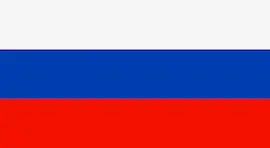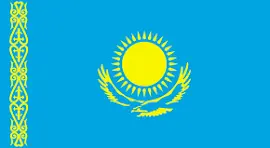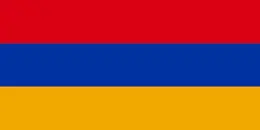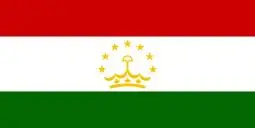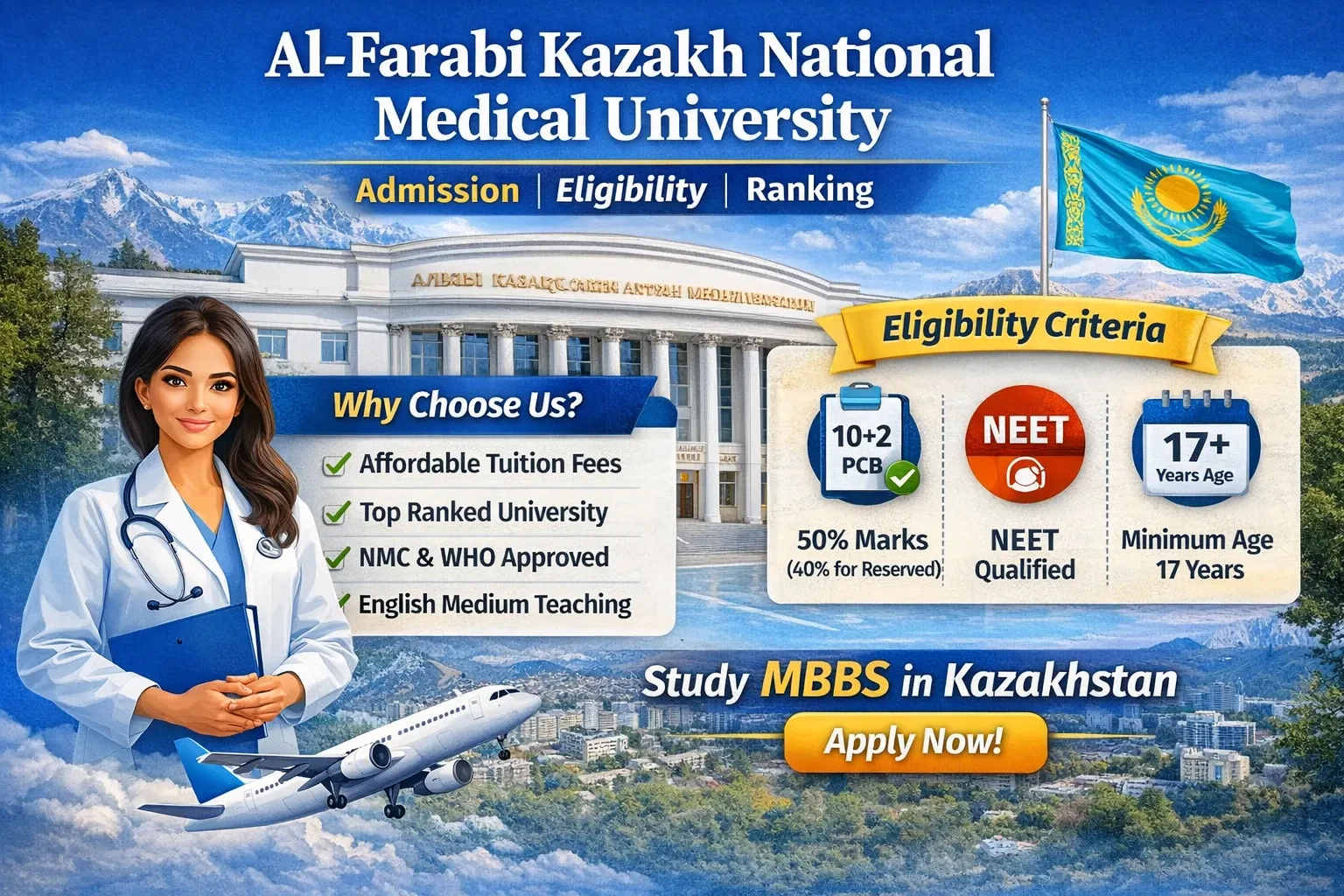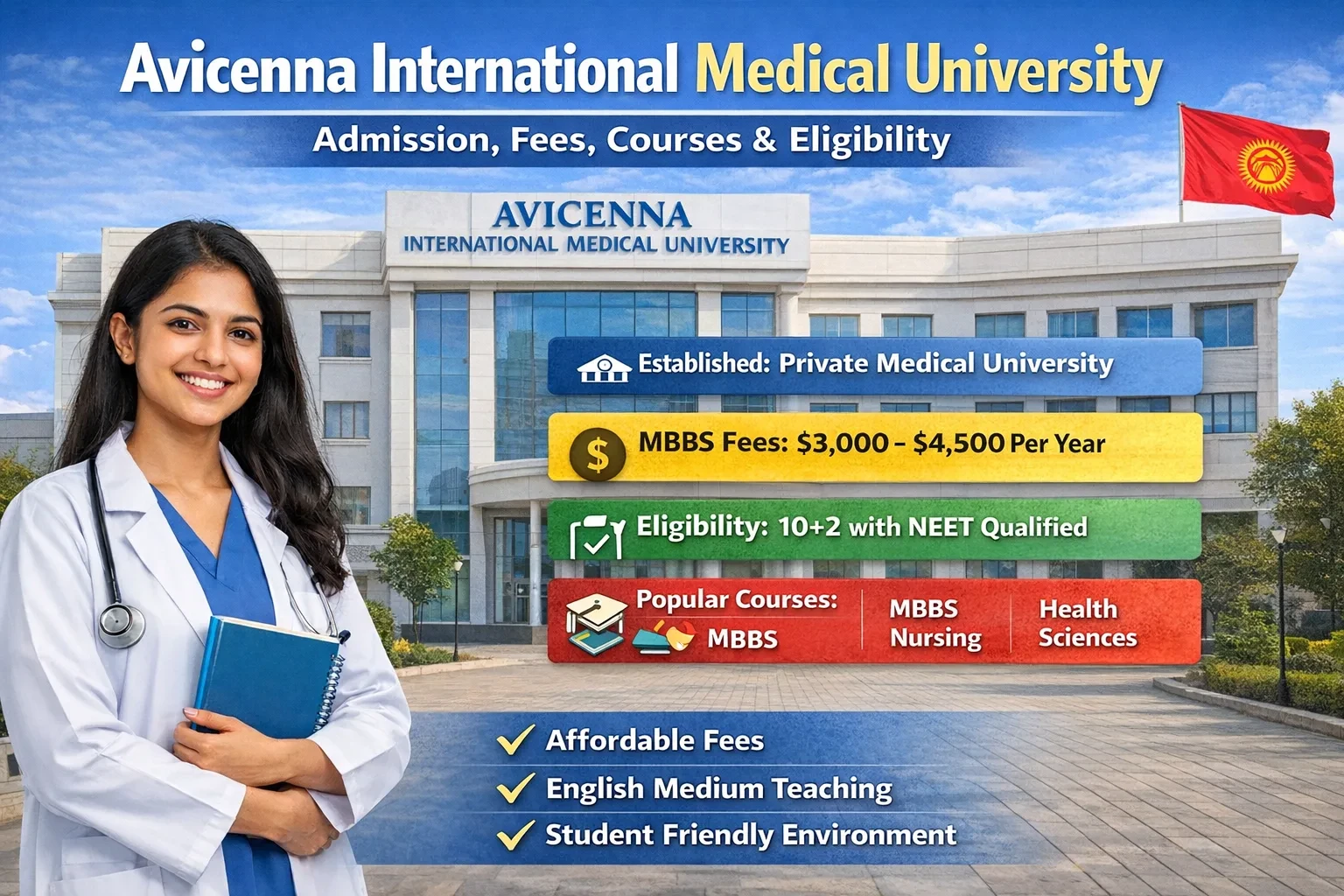Progress Medical University – Introduction
Progress Medical University, located in Gyumri, Armenia, is a leading institution offering high-quality medical education to international students, especially from India. Also known as Progress University, it is gaining rapid popularity among students aiming to pursue MBBS in Armenia at an affordable cost. With a focus on global medical standards, Progress Medical University Armenia delivers an English-medium MBBS program that is fully recognized by international bodies like the National Medical Commission (NMC) and the World Health Organization (WHO).
As one of the emerging names in medical education, Progress Medical University Gyumri Armenia offers modern infrastructure, experienced faculty, and global exposure to its students. It is known for its reasonable MBBS fees structure, simplified admission process, and supportive learning environment. This makes it a preferred destination for those looking to study MBBS in Armenia for Indian students in 2025.
Why Progress Medical University?
Progress Medical University in Gyumri, Armenia, has become a top choice for students who wish to pursue MBBS in Armenia due to its international recognition, affordable fee structure, and student-friendly environment. Here are the top reasons to choose Progress University:
- ✅ Recognized Globally: Approved by the National Medical Commission (NMC) and listed by WHO, ensuring that the MBBS degree is valid in India and other countries.
- ✅ Affordable Tuition Fees: Compared to other international institutions, the Progress Medical University fees and tuition structure are budget-friendly, especially for Indian students.
- ✅ English-Medium MBBS Program: The entire MBBS course is taught in English, eliminating language barriers for international students.
- ✅ Experienced Faculty: The university offers qualified professors and clinical training that meets global standards.
- ✅ Safe and Welcoming Campus: Located in Gyumri, Armenia, the Progress Medical University campus offers modern infrastructure and a safe environment.
- ✅ High-Quality Education: The university follows the European Credit Transfer System (ECTS), ensuring compatibility with other European medical programs.
- ✅ No Entrance Exam or Donation: Direct admission without any entrance test or capitation fees.
- ✅ Best Option for MBBS Abroad 2025: With competitive MBBS in Armenia fees, Progress Medical University 2025 is ideal for students looking for quality education abroad.
When it comes to pursuing MBBS abroad, Armenia has become a hub for quality education at affordable costs. Among the various universities, Progress Medical University in Gyumri, Armenia is gaining massive attention in 2025 due to its world-class education, affordable tuition, and global recognition. Whether you're seeking the best MBBS university in Armenia, or exploring international medical degrees that are valid in India, Progress Medical University stands as a top choice.
This comprehensive blog will help you understand every detail about Progress Medical University, the MBBS course structure, its fees, eligibility, and how Ensure Education can help make your dream come true.
About Progress Medical University – Gyumri, Armenia
Progress Medical University, located in Gyumri, Armenia, is one of the most rapidly growing institutions for MBBS in Armenia. Also known as Progress University, it offers internationally recognized medical education and has become a preferred destination for students seeking affordable and quality medical education abroad.
The university is known for its modern infrastructure, student-friendly environment, and English-medium MBBS course. With its presence in Gyumri, Armenia, the second-largest city in the country, Progress Medical University Gyumri Armenia provides students with an ideal academic and cultural environment.
Recognized by major global bodies such as the World Health Organization (WHO) and National Medical Commission (NMC), Progress Medical University Armenia maintains high academic standards. The university is committed to producing globally competent medical professionals.
As of 2025, the university continues to attract students from India, Nepal, Bangladesh, and several other countries. The Progress Medical University fees, tuition structure, and hostel accommodations are affordable compared to other medical universities in Armenia.
Progress Medical University Gyumri Armenia is a well-recognized medical institution offering MBBS and various healthcare programs to international students, especially from India. It is located in Gyumri, Armenia’s second-largest city, offering a peaceful and academically focused environment.
The university is known for:
- Affordable tuition fees
- English-medium instruction
- NMC and WHO recognition
- State-of-the-art infrastructure
- Highly qualified faculty
- Strong clinical exposure
Progress Medical University – Our Facilities
Progress Medical University, located in Gyumri, Armenia, is renowned not only for its academic excellence but also for offering world-class facilities that support holistic medical education. The university is committed to ensuring a comfortable and resourceful environment for students pursuing MBBS in Armenia.
The university campus is modern and equipped with advanced laboratories, smart classrooms, digital libraries, and simulation-based learning systems. These facilities make Progress Medical University Gyumri Armenia a center of excellence in the region.
Students enjoy on-campus hostel facilities that are safe, clean, and furnished with all necessary amenities. The Progress Medical University hostel ensures that students feel at home while focusing on their studies. Separate accommodation for boys and girls is provided with 24/7 security.
Key features include:
- Fully equipped science and anatomy labs
- Clinical training in affiliated hospitals
- Digital library with medical journals and e-books
- Canteen serving Indian and international cuisine
- Sports and recreational facilities
- Free Wi-Fi and study zones
- Access to student support and counseling
Progress Medical University Armenia believes in creating a student-centric ecosystem where aspiring doctors can thrive academically and personally.
Documents Required for Admission at Progress Medical University
To secure a seat for MBBS in Armenia at Progress Medical University, applicants must prepare and submit a set of essential documents. These documents are mandatory to ensure eligibility and smooth processing for international students, especially those from India.
Below is the list of documents required for admission at Progress Medical University Gyumri Armenia:
- 10th and 12th Mark Sheets (Scanned copies)
- Valid Passport (Minimum 2 years validity)
- Passport-size Photographs (8–10 with white background)
- NEET Score Card (As per NMC eligibility certificate norms)
- Birth Certificate (English-translated copy)
- Medical Fitness Certificate
- HIV Report (Negative)
- Police Clearance Certificate
- Migration and Transfer Certificates
- Affidavit and Gap Certificate (If applicable)
- NMC Eligibility Certificate (Required for Indian students applying abroad)
- Offer Letter from Progress Medical University Armenia
- Visa Invitation Letter
- Student Visa
Make sure to have both originals and photocopies of all documents, properly attested and notarized, as per embassy requirements.
Progress Medical University, also known as Progress University, is one of the most preferred destinations for Indian students pursuing MBBS in Armenia, and having complete documentation ensures hassle-free admission and visa approval.
Progress Medical University Fees Structure – 2025
One of the main attractions for Indian students is the affordable MBBS fee structure at Progress Medical University.
- Tuition Fees: ₹2,00,000 – ₹2,50,000 per year (approx.)
- Hostel & Mess Fees: ₹50,000 – ₹70,000 per year (approx.)
- Total MBBS Cost: ₹15-18 lakhs (for the full 6-year program)
Courses Offered at Progress Medical University
Progress Medical University, also known as Progress University, located in Gyumri, Armenia, offers a range of medical courses tailored to meet global standards. This university is recognized for its quality education and advanced infrastructure, making it a popular destination for students pursuing MBBS in Armenia.
✅ Courses Offered at Progress Medical University:
- MBBS (Bachelor of Medicine, Bachelor of Surgery)
– The flagship program offered by Progress Medical University Armenia, fully compliant with international medical education standards and suitable for Indian students planning to appear for FMGE/NExT.
- General Medicine (MD)
– Equivalent to MBBS in several countries and accepted worldwide. It includes pre-clinical, para-clinical, and clinical training in a comprehensive curriculum.
- Dentistry
– A professional program focusing on oral health and surgery.
- Pharmacy
– A course designed for students interested in the study of drugs and pharmaceuticals.
- Nursing
– A popular choice among international students with a focus on patient care, health education, and clinical practice.
- Postgraduate Medical Courses (Residency Programs)
– Specialization in various fields such as Surgery, Pediatrics, Internal Medicine, Radiology, and more.
Why Choose MBBS in Armenia (Progress Medical University)?
MBBS in Armenia, especially at Progress Medical University Gyumri, is becoming an increasingly popular choice for medical aspirants from India and other countries. Armenia provides affordable, high-quality education, and Progress Medical University stands out as a reliable and globally recognized institution for medical studies.
✅ Top Reasons to Choose MBBS at Progress Medical University – Armenia:
- Affordable Tuition Fees
The Progress Medical University fees are much lower compared to private medical colleges in India and other countries. It offers an excellent MBBS in Armenia fee structure for budget-conscious students.
- English Medium Curriculum
Courses, including MBBS, are taught in English, making it comfortable for international students, particularly those from India.
- Globally Recognized Degree
Progress Medical University Armenia is recognized by global medical bodies and included in WHO, NMC (formerly MCI), and other directories. The degree is valid in countries like India, USA, UK, and more.
- No Entrance Exam Required
Admission to Progress University doesn’t require any entrance exam like NEET (for foreign nationals), though Indian students must qualify NEET for NMC eligibility certificate.
- Modern Campus Facilities
The campus of Progress Medical University Gyumri Armenia is equipped with modern labs, libraries, hospitals, and high-tech classrooms. The hostel facilities are safe, affordable, and include Indian food options.
- Experienced Faculty
The university employs experienced and internationally trained professors, ensuring top-quality medical education.
- NMC & WHO Recognition
Progress University is NMC approved, making its MBBS degree valid in India. Students can apply for the NMC eligibility certificate and appear for FMGE/NExT after graduation.
- Safe Environment
Gyumri is a peaceful and student-friendly city with a vibrant culture and welcoming locals.
Student Life & Campus Facilities at Progress Medical University
Studying at Progress Medical University Gyumri Armenia not only offers world-class education but also ensures a vibrant and fulfilling student life. The university is dedicated to providing a safe, enriching, and student-friendly environment that supports holistic development.
🏫 Campus Environment
The campus of Progress Medical University is located in the heart of Gyumri, Armenia, offering modern infrastructure blended with serene surroundings. The university maintains high standards of cleanliness, safety, and comfort.
🛏️ Hostel & Accommodation
The Progress Medical University hostel provides fully furnished rooms, available on a shared basis. Key features include:
- 24x7 security
- Central heating and Wi-Fi
- Indian mess and kitchen facilities
- Common rooms and study halls
This makes mbbs in Armenia for Indian students extremely convenient and affordable.
📚 Library & Laboratories
The university houses a well-stocked library and advanced laboratories for pre-clinical and clinical training. These facilities support the Progress Medical University courses, especially for MBBS in Armenia.
⚕️ Hospital Training
Students get access to top-tier hospitals for clinical training. This practical exposure ensures high-quality education aligned with global standards, enhancing the progress medical university ranking globally.
💻 Digital Classrooms & Wi-Fi Campus
With smart classrooms and campus-wide internet connectivity, students benefit from an interactive learning environment, making study mbbs in Armenia engaging and effective.
🎯 Student Activities & Cultural Life
The university organizes regular cultural, academic, and sports events. Students enjoy an active social life and participate in:
- Medical seminars & workshops
- Cultural festivals
- Sports competitions
- International student exchange programs
🚌 Transport & Accessibility
Located in Gyumri, the university is well-connected by public transportation and is easily accessible from nearby airports and railway stations, making mbbs in Armenia cost-effective and convenient.
✅ Support Services
Progress Medical University offers counseling, language support, and academic mentoring for foreign students, especially helpful for mbbs in Armenia for Indian students and others from different countries.
Which Is the No.1 Medical University in Armenia?
When exploring top medical universities in Armenia, Progress Medical University stands out as one of the most preferred choices among international students, especially Indian aspirants. Located in Gyumri, Armenia, Progress Medical University is recognized for its quality education, modern infrastructure, and global exposure, making it a leading institution for MBBS in Armenia.
With its growing reputation and strong academic framework, Progress Medical University Armenia is increasingly considered among the top medical universities in Armenia. Its student-centric approach, highly qualified faculty, and English-medium programs have contributed to its rising popularity and improved Progress Medical University ranking.
For students looking for affordable yet high-quality education, Progress Medical University Gyumri Armenia is a top destination. Whether it’s the low progress medical university tuition fees, strong clinical exposure, or the comfortable Progress Medical University hostel, it fulfills all the essential parameters of a world-class medical university.
Is MBBS from Armenia Valid in India?
Yes, MBBS from Armenia is valid in India, provided the university is recognized by the National Medical Commission (NMC), formerly MCI. One such recognized and reputed institution is Progress Medical University, located in Gyumri, Armenia.
Progress Medical University Armenia offers a 6-year MBBS program in English medium, which meets the NMC guidelines for foreign medical education. Indian students graduating from Progress Medical University Gyumri Armenia are eligible to appear for the FMGE (Foreign Medical Graduate Examination) in India, which is mandatory for medical practice or pursuing postgraduate studies.
The university holds good standing in the Progress Medical University ranking and is gaining popularity due to its affordable Progress Medical University tuition fees, quality education, and increasing number of successful graduates clearing FMGE.
Thus, for students planning to study MBBS in Armenia for Indian students, Progress Medical University is a smart and valid choice with recognition and credibility for Indian medical licensing.
Is Progress Medical University Government or Private?
Progress Medical University, located in Gyumri, Armenia, is a private medical university. Despite being a private institution, it is fully recognized by the National Medical Commission (NMC) of India, listed in the World Directory of Medical Schools (WDOMS), and adheres to international standards of medical education.
As a private university, Progress Medical University Armenia offers high-quality education with a modern curriculum, experienced faculty, and well-equipped infrastructure. The tuition fees and MBBS fee structure are affordable compared to other international universities, making it a popular choice among Indian and international students seeking to study MBBS in Armenia.
Students graduating from Progress Medical University Gyumri Armenia are eligible to appear for licensing exams like FMGE in India and USMLE/PLAB in the US and UK, respectively.
So, if you're searching for a reliable private medical university in Armenia, Progress Medical University offers excellent value in terms of education, recognition, and global career prospects.
What’s the Admission Process for MBBS 2025?
The admission process for MBBS 2025 at top international universities like Progress Medical University in Armenia is simple and student-friendly. Indian students who want to study MBBS abroad should carefully follow these steps:
- Check Eligibility
Candidates must have completed 10+2 with Physics, Chemistry, Biology, and English, with a minimum of 50% marks (40% for reserved categories).
- Qualify NEET (if applicable)
For Indian students, NEET qualification is mandatory to receive the NMC Eligibility Certificate.
- Application Submission
Fill the university's application form online or through the best education consultancy like Ensure Education.
- Upload Required Documents
Submit academic transcripts, NEET scorecard, passport, passport-size photos, and other supporting documents.
- Receive Admission Letter
Once verified, you will receive a provisional admission letter from Progress Medical University Gyumri Armenia.
- Apply for NMC Eligibility Certificate
Apply on the NMC portal with the required documents and affidavit.
- Visa Process
Submit your admission letter and other documents to the Armenian Embassy for the student visa.
- Pay Tuition Fees
Pay the first-year tuition fees as per the Progress Medical University Armenia fee structure.
- Fly to Armenia
Book your tickets and begin your MBBS journey with Progress Medical University in Gyumri, Armenia.
How to Apply via Ensure Education?
Applying to Progress Medical University through Ensure Education is the most reliable and hassle-free method for Indian students planning to study MBBS in Armenia. As one of the best education consultancy in India, Ensure Education offers complete guidance from counseling to departure.
✅ Step-by-Step Process to Apply via Ensure Education:
- Free Counseling Session
Connect with Ensure Education for a free career counseling session and detailed guidance on MBBS in Armenia for Indian students.
- University Selection
Based on your academic background and budget, experts help you choose top universities like Progress Medical University Gyumri Armenia.
- Eligibility Verification
Consultants verify your academic documents and NEET qualification as per the Progress Medical University eligibility criteria.
- Application Form Submission
Ensure Education fills out and submits your application to Progress Medical University Armenia on your behalf.
- Documentation Support
Get help compiling and uploading necessary documents such as passport, 10+2 mark sheets, NEET score, photos, etc.
- Admission Letter
Receive your official admission letter from Progress Medical University confirming your seat.
- NMC Eligibility Certificate Assistance
Experts guide you in applying for the NMC Eligibility Certificate 2025, including affidavit, clarification letter (if needed), and documentation.
- Visa Processing
Ensure Education helps you with visa documentation and interview preparation for traveling to Armenia.
- Travel & Accommodation Support
You get support with flight bookings and Progress Medical University hostel arrangements.
- Post-Arrival Assistance
From airport pickup in Armenia to university orientation, Ensure Education ensures a smooth student experience.
📞 Contact Ensure Education now for a free consultation and grab your seat for the 2025 intake.
Why Choose Ensure Education?
When it comes to pursuing MBBS abroad, selecting the right guidance partner is crucial. Ensure Education stands out as the best education consultancy in India, known for its trusted and personalized services. Here's why hundreds of students choose Ensure Education every year:
✅ 1. Experienced & Trusted Consultancy
With years of experience, Ensure Education has earned the title of the top MBBS consultancy in Jaipur and beyond. They have successfully guided thousands of Indian students toward their dream of becoming doctors abroad.
✅ 2. Personalized Career Counseling
Get one-on-one career guidance from certified experts. Whether you're searching for study abroad consultants near me or a best study abroad consultants in Jaipur, Ensure Education is always within reach.
✅ 3. Wide Range of University Options
From Armenia to Russia, Kazakhstan, Kyrgyzstan, and Uzbekistan, Ensure Education offers admission to top government and private medical universities, making it the top education consultancy in Jaipur for MBBS.
✅ 4. Complete Admission Support
From selecting a university to handling application forms, documentation, visa processing, and hostel arrangements, Ensure Education offers end-to-end support for your MBBS journey.
✅ 5. Expertise in MBBS Abroad
Ranked as the best MBBS consultancy in Jaipur, Ensure Education specializes exclusively in MBBS admissions, ensuring you receive focused and reliable advice.
✅ 6. Transparency and Affordability
No hidden charges, no fake promises—just genuine guidance at a reasonable cost, making Ensure Education the best education consultancy near me for thousands of parents and students.
✅ 7. Local & National Presence
Whether you need education consultants in Jaipur or overseas education consultants in Jaipur, Ensure Education is well-established locally and nationally, helping students from all parts of India.
✅ 8. Post-Admission Services
Ensure Education doesn't stop at admission. They continue to assist you even after you've enrolled, offering help with travel, accommodation, and academic support.
🏁 Conclusion – Progress Medical University
Progress Medical University, situated in Gyumri, Armenia, is rapidly emerging as one of the top choices for international students aiming to pursue MBBS in Armenia. The university offers high-quality education, a student-friendly environment, and globally recognized degrees at an affordable cost. The Progress Medical University fees are budget-friendly compared to many other medical universities in Armenia, making it a smart choice for Indian students.
With its steadily improving Progress Medical University ranking, modern facilities, and English-medium courses, the institution offers an ideal platform for students to launch their medical careers. Whether you’re checking the Progress Medical University mbbs fees, its world-class campus, or the student lifestyle in Gyumri, Armenia, this university checks all the boxes.
To simplify your journey, Ensure Education – one of the best MBBS consultancies in Jaipur and among the top study abroad consultants in India – provides step-by-step assistance for your admission, visa process, and travel arrangements. Their expert team has helped thousands of students successfully get placed in top medical universities abroad.
👉 Watch Full University Review Here: Progress Medical University Full Video
👉 Subscribe to Our Channel – Ensure Education: YouTube Channel Link
With professional guidance from Ensure Education, you’ll be one step closer to becoming a world-class doctor.

Ensure TV
 About Us
About Us
 Insights & Awareness
Insights & Awareness





